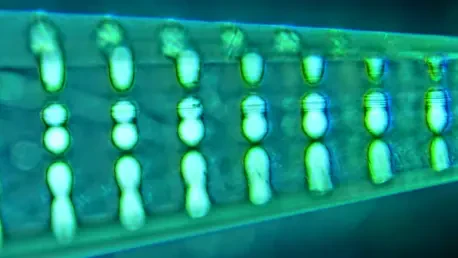Innorna, a biotechnology firm from China, has made significant strides in developing an mRNA therapeutic called IN013, designed specifically for Wilson’s disease. This progressive step has been further empowered by the US Food and Drug Administration (FDA), which has conferred rare pediatric disease and orphan drug designations on the drug. Such designations are strategically designed to expedite drug development and enhance market positioning, particularly for rare diseases that are both challenging to manage and affect a limited population due to their unique characteristics. These regulatory acknowledgments are pivotal in fostering new treatments for diseases that lack alternative therapies, thereby addressing vital unmet medical needs.
Understanding Wilson’s Disease and Its Treatment Challenges
Wilson’s disease is a genetic disorder that causes dangerous copper accumulation in vital organs like the liver and brain, leading to severe health implications. This condition results from a mutation in the ATP7B gene, which impairs the body’s natural ability to regulate and eliminate copper, necessitating precise management of copper levels to mitigate its toxic effects. Globally, Wilson’s disease affects approximately one in every 30,000 individuals. Its prevalence is particularly notable in populations practicing consanguinity, where the risk of genetic disorders is heightened. The complexity of this disease continues to pose significant challenges in its treatment, given the intricate balance required to manage the copper load effectively without causing further harm.
Benefits of FDA Designations for Innorna
The granting of the rare pediatric disease designation to IN013 by the FDA brings substantial benefits to Innorna in its drug development journey. This designation is meant for treatments targeting conditions that affect fewer than 200,000 pediatric patients in the United States. Should IN013 receive FDA approval, Innorna could obtain a priority review voucher (PRV), which is highly coveted in the pharmaceutical industry. The PRV would allow an expedited review process for another drug, possibly reducing the review time by several months. Alternatively, Innorna could choose to sell this voucher, as they have been known to fetch considerable sums—sometimes upwards of $100 million—providing a different kind of financial boost.
The orphan drug designation further strengthens Innorna’s market position by offering seven years of market exclusivity once the product is approved. This period of exclusivity, which stands regardless of patent status, can deter competitors from entering the market with similar indications. Additionally, it offers tax credits for clinical trials conducted in the United States, which can significantly mitigate the high costs inherently associated with developing new drugs. Together, these benefits not only provide economic incentives but also bolster Innorna’s competitive edge, creating a more favorable landscape for the company within the rare disease therapeutic space.
Current Therapeutic Landscape for Wilson’s Disease
Existing treatments for Wilson’s disease predominantly involve the use of copper chelating agents, which work by binding to excess copper, allowing it to be eliminated from the body. These agents have been fundamental in managing the disease, despite some notable shortcomings. For example, Orphalan’s Cuvrior, approved by the FDA recently, marked the first new treatment in over three decades, underscoring the inertia in therapeutic development for this condition. While such treatments represent progress, they are not without limitations, primarily offering partial efficacy and carrying potential side effects like hepatorenal toxicity or exacerbation of existing neurological issues. The complexity of the disease necessitates new approaches that can more effectively target its underlying genetic causes.
Innorna’s Innovative mRNA Approach
Innorna seeks to address the gaps in current treatments for Wilson’s disease with its innovative mRNA-based therapeutic, IN013. Utilizing a lipid nanoparticle platform, this therapy aims to directly influence the production of the ATP7B protein, which is crucial for copper regulation. By intervening at an upstream genetic level, IN013 promises a method that not only targets the root cause of systemic copper build-up but also offers a potential improvement over existing therapies. This sophisticated mechanism holds considerable promise, potentially overcoming some of the challenges faced by traditional chelation therapies and providing a more direct approach to managing the disease effectively.
Broader Industry Developments
Innorna, a biotechnology company based in China, has achieved a notable milestone by advancing the development of an mRNA therapeutic named IN013, which is aimed at treating Wilson’s disease. This advancement has gained further momentum through the recognition of the US Food and Drug Administration (FDA). The FDA has awarded IN013 with both rare pediatric disease and orphan drug designations. These designations are crucial because they are specifically intended to accelerate the drug development process, making it easier and quicker to bring potential treatments to market. They are especially important for rare diseases that are hard to treat and affect a small number of people, providing a notable boost to the drug’s market positioning. Regulatory support like this is essential in encouraging the creation of new therapies for diseases where there are currently no available treatment options, thereby addressing significant unmet medical needs, advancing healthcare possibilities, and offering hope to affected individuals and families.









